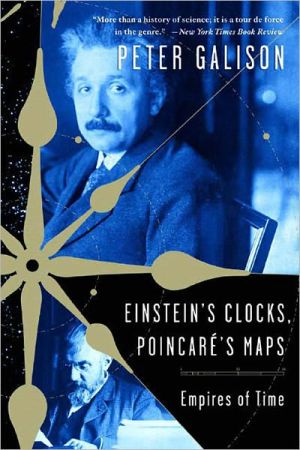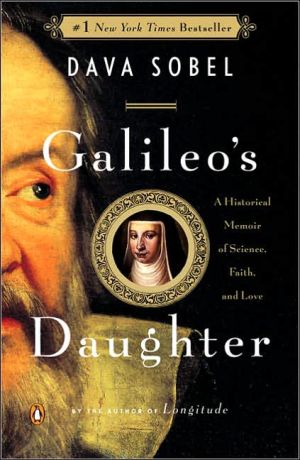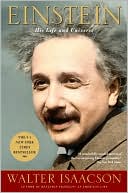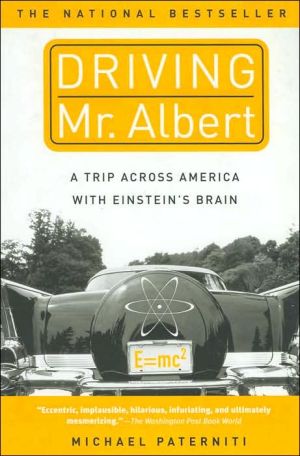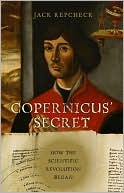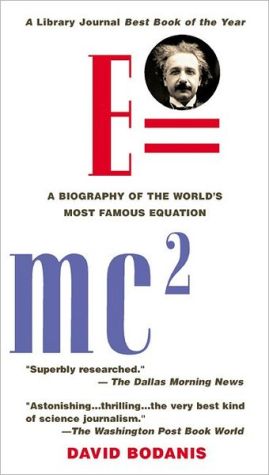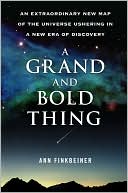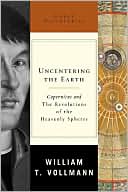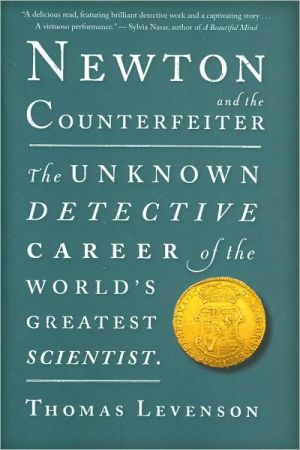Einstein's Clocks, Poincare's Maps: Empires of Time
"More than a history of science; it is a tour de force in the genre."—New York Times Book Review\ A dramatic new account of the parallel quests to harness time that culminated in the revolutionary science of relativity, Einstein's Clocks, Poincaré's Maps is "part history, part science, part adventure, part biography, part meditation on the meaning of modernity....In Galison's telling of science, the meters and wires and epoxy and solder come alive as characters, along with physicists,...
Search in google:
"More than a history of science; it is a tour de force in the genre."—New York Times Book Review The New York Times Galison demonstrates convincingly and in riveting detail how that ''opalescent'' question of 1900, standard time and precise longitudes, was the reference frame for both Poincare and Einstein. His book is more than a history of science; it is a tour de force in the genre -- science writing -- that [Poincare's] Science and Hypothesis helped invent. With polymathic zest, Galison explains the century-old but still confusing special theory of relativity through the cultural history of technology. Technology's history has long been a royal road to ''hard'' science for the nonmathematical reader; but readers of Galison will be persuaded that both Einstein and Poincare arrived at their deconstruction of 19th-century physics by following that same road. — William R. Everdell
Acknowledgments9Ch. 1Synchrony13Einstein's Times14A Critical Opalescence26Order of Argument41Ch. 2Coal, Chaos, and Convention48Coal54Chaos62Convention76Ch. 3The Electric Worldmap84Standards of Space and Time84Times, Trains, and Telegraphs98Marketing Time107Measuring Society113Time into Space128Battle over Neutrality144Ch. 4Poincare's Maps156Time, Reason, Nation156Decimalizing Time162Of Time and Maps174Mission to Quito191Etherial Time198A Triple Conjunction211Ch. 5Einstein's Clocks221Materializing Time221Theory-Machines227Patent Truths243Clocks First263Radio Eiffel271Ch. 6The Place of Time294Without Mechanics294Two Modernisms303Looking Up, Looking Down322Notes329Bibliography355Index371
\ James Gleick“This is how twentieth-century science really began....Engaging, original, and absolutely brilliant.”\ \ \ \ \ Science“An easy-reading but penetrating book. [Galison] brings the story of time to life as a story of wires and rails, precision maps, and imperial ambitions, as well as a story of physics and philosophy.”\ \ \ American Scientist“Galison provides a unique and enlightening view on the origin of time as we know it in the modern age.”\ \ \ \ \ Booklist“Few books have ever made Einstein's work more accessible—or more engrossing—for general readers.”\ \ \ \ \ The New York TimesGalison demonstrates convincingly and in riveting detail how that ''opalescent'' question of 1900, standard time and precise longitudes, was the reference frame for both Poincare and Einstein. His book is more than a history of science; it is a tour de force in the genre -- science writing -- that [Poincare's] Science and Hypothesis helped invent. With polymathic zest, Galison explains the century-old but still confusing special theory of relativity through the cultural history of technology. Technology's history has long been a royal road to ''hard'' science for the nonmathematical reader; but readers of Galison will be persuaded that both Einstein and Poincare arrived at their deconstruction of 19th-century physics by following that same road. — William R. Everdell\ \ \ \ \ Publishers WeeklyHarvard historian of science Galison approaches our understanding of time at the beginning of the 20th century through two related dimensions. The first, extremely practical perspective focuses on our ability to accept a common definition of time at various locations. Before our current system of time zones existed, time was a local construct, making it extremely difficult to coordinate events, have trains run smoothly or determine longitude. The second, far more theoretical perspective deals with the basic laws of physics and addresses the question: is time absolute or relative? Galison focuses his narrative through the eyes of the two scientists most responsible for crafting our present understanding of time, Albert Einstein and Henri Poincar . While Einstein needs no introduction, the less well-known Poincar does. He was one of the world's most renowned mathematicians and president of the French Bureau of Longitude. Galison explains how, in the case of each of these scientists, the practical dimension helped shape their understanding of the theoretical dimension, and, in turn, how they helped transform the world. Although Galison's material is of great interest, his writing is often obtuse and overly technical, making the book's ideas less accessible to a general audience. 46 illus. (Aug.) Copyright 2003 Reed Business Information.\ \ \ \ \ Library JournalAt the beginning of this book, Galison, a Harvard-based historian of science, notes that relativity theory starts with a concern for the definition of time-what do we mean by time and by the notion of simultaneity? Einstein and his contemporary, Henri Poincare, a brilliant polymath, both answered that time is properly defined by rigorous descriptions of measurement methodology and procedures for comparing the time at different, separated locations. They also set aside the metaphysical Newtonian concept of "absolute time" flowing serenely onward independent of merely human measurement systems. Galison argues that Einstein and Poincar had more to work with than just ivory-tower theorizing. He documents how both men were deeply involved with the technical and practical issues of time measurement that were being addressed in the "real world" of the late 19th and early 20th centuries. Einstein used telegraph networks and train station clocks to experiment with time; Poincar mapped global time coordinates. Galison writes with a cheery enthusiasm that enlivens a rather arcane subject. Strongly recommended for academic and large public libraries.-Jack W. Weigel, Ann Arbor, MI Copyright 2003 Reed Business Information.\ \ \ \ \ Kirkus ReviewsAn argument that Einstein's theory of relativity was no stroke of genius but, rather, a logical development of ideas already in the air. The problem of synchronizing timepieces was a preoccupation of many turn-of-the-century scientists, writes Galison (History of Science/Harvard; Image and Logic, not reviewed), and notable among them was Henri Poincaré, head of the French Bureau of Longitude. The growth of railroad networks and of the modern military made standardized time an issue of sweeping importance; the Franco-Prussian war had been decided largely by the German ability to mobilize its forces and deliver them to the front by rail. In addition, the creation of accurate maps depended critically on comparing the local time of astronomical events with the time at a standard location; accurate, synchronized clocks were essential. Poincaré, a product of the French École Polytechnique, was trained to consider a scientific subject for both its practical and theoretical implications, an orientation reinforced by his work on longitude. Several of Poincaré's publications argue against the idea of absolute time, a point that would be a central issue in the relativity theory. Nor was Einstein a pure theoretician; his work at the Swiss patent office required evaluating inventions of all sorts, and a number of chronometers and techniques for electronic synchronization went through the office during his tenure there. In fact, the "crowning step" in Einstein's 1905 formulation of special relativity appears to have been an insight on the synchronization of clocks. Galison is careful to list the key differences between Einstein's and Poincaré's descriptions of time and space, but his key point seemsclear: the theory of relativity was up for grabs, and Poincaré came close to capturing it well before Einstein. A richly detailed account of the interplay of scientific and technical issues at the beginning of the modern era.\ \ \ \ \ Booklist starred review“Few books have ever made Einstein's work more accessible—or more engrossing—for general readers.”\ \
